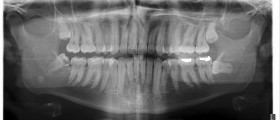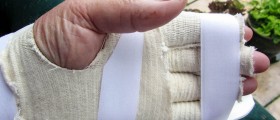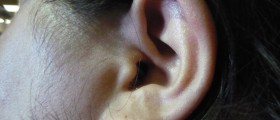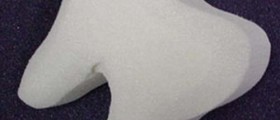
People who experience problems with their jaw, usually encounter this due to some complications related to the temporomandibular joint or the TMJ. The treatment for these kinds of problems may vary.
However, the most common ones involve the usage of surgical procedures and the splint therapy, being the non-invasive alternative, suitable in some forms of treatments for TMJ problems.
Definition and Types of Splints
Most people know what splints are, since these items are most commonly used for helping people deal with the problems they encounter during sports. However, we also use some other forms of splints for overcoming various types of health problems. For example, we use mouth guards for dealing with sleep apnea or some other problems of this type. Splints can, thus, be named differently, depending on their usage and purpose. Thereby, you might have heard of mouthpieces, orthoics, nightguards or bite plates.
Either way, these splints are usually made of soft or hard plastic, covering all of the teeth or a specified number of them, being placed on the top or on the bottom of the teeth, depending on the type of the problem being treated.
As far as the types of splints are concerned, one may need to wear stabilization splints, in order to prevent clenching and grinding of the teeth, being flat splints which cover all the teeth in the mouth. The stabilization splints can be made hard or soft.
Alternatively, your doctor may recommend repositioning splints helping you pull the lower jaw forward. Commonly, this type of splints needs to be worn all the time and there are several subtypes made for different medical purposes.
How the Splints Work?
Splints make it possible for the muscles and ligaments in the TMJ area to relax, removing pain and tension which can often be the main cause of discomfort. Also, this removes the tightness in the area which might lead to bruxism, clenching or some other forms of jaw problems.
In cases of teeth grinding, the splints act as a protective layer for the teeth, preventing any deterioration due to the friction. Alternatively, if the TMJ pain is caused by a bite which is not proper, the splints made for these purposes guide the jaw into the suitable position, considered to be the optimal one, as far as dentists and other health experts are concerned.
Once a person has worn splints constantly over the course of days, months or years, he/she enters a phase II of the therapy. Here, the bite problems have been dealt with and the patient is not required to wear the splints all of the time. However, the patient still needs to wear these items in order to prevent any relapse of his/her condition.
In order to prevent such problems, different dental treatments may be necessary, including orthodontics, veneers, crowns, bridges, reshaping of the teeth, surgery and many other irreversible modifications. Thus, in order for the whole treatment to be successful, the patients are advised to follow the instructions given by their dentists, regarding both the wearing of splints and some other factors. Also, it is always good to seek a second or even a third opinion before opting for a specific type of treatment.
Ease Your Facial Pain
You are highly advised not to ignore any jaw pain or problems you are experiencing. Rather, you should seek treatment for these problems. There are many different treatments for your jaw problems and splint therapy is just one of them.
In fact, whenever the splint therapy proves to be unsuccessful, some of the alternatives such as medications, physical therapy, injections and even Botox injections can be used.
Rest assured that the treatment is not the only thing you will have to go through. Due to the fact that the recovery process related to TMJ surgeries is quite a long one, various complications may take place during eating, chewing, talking and swallowing.
Yet, taking into consideration that this form of medical intervention is commonly covered by insurance, at least one part of your troubles is removed. Still, be careful since many insurance companies exclude this form of service nevertheless. So, pay attention to these factors beforehand, organizing yourself in advance, being adequately prepared for the surgery, splint therapy and any other forms of treatment.
The FDA regulates all the equipment and methods used for helping people deal with different forms of jaw pains. In the past many different types of treatment, such as the synthetic Proplast which was used for replacing cartilages were removed since they lead to complications.
All in all, many reasons can lead to jaw pain and this condition can manifest through various occurrences. Hence, more than a single method of treatment is available and the splint therapy may certainly prove to be of great assistance. Keep that in mind and know what kind of medical support you can ask for.
















Your thoughts on this
Loading...